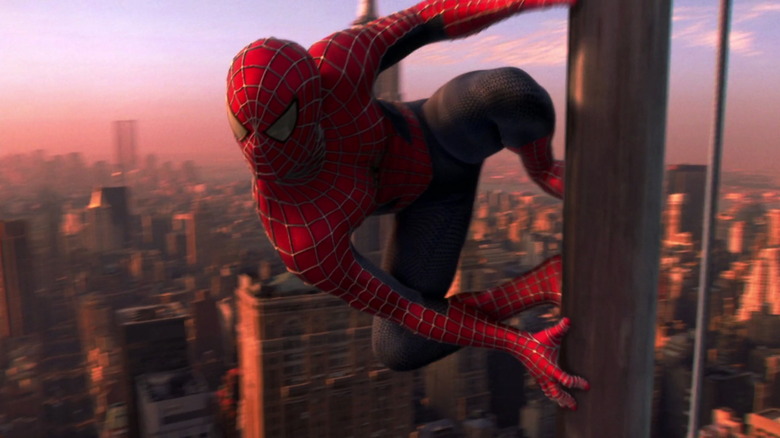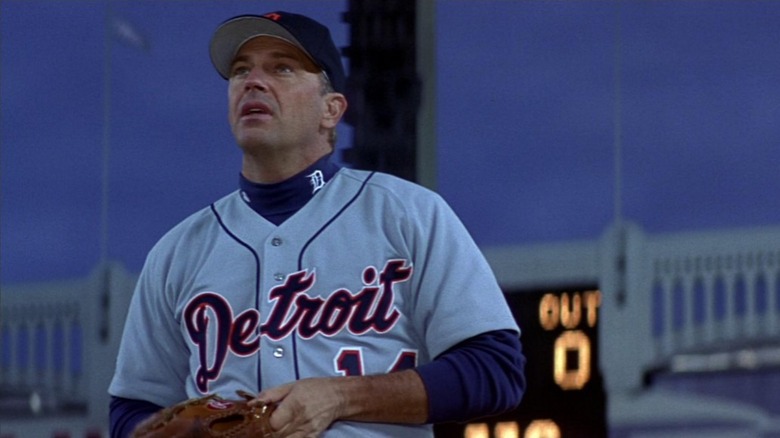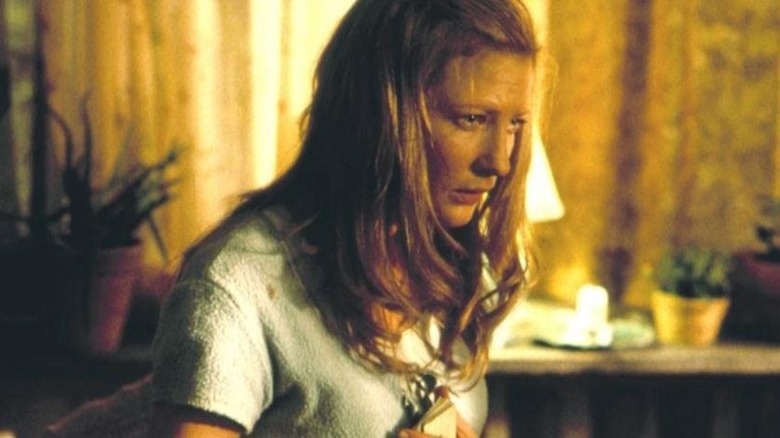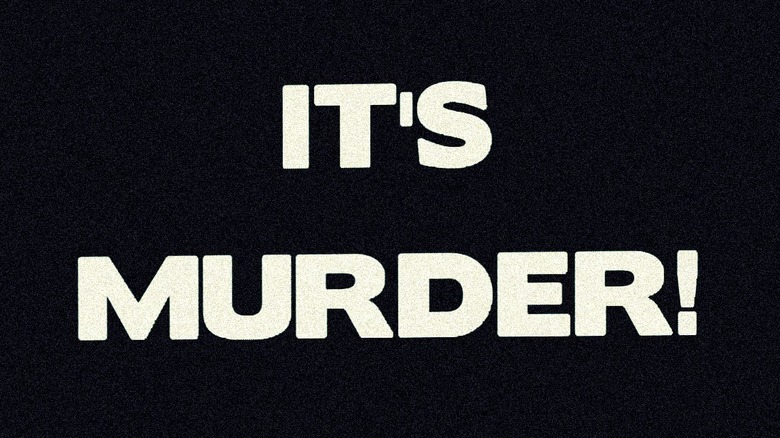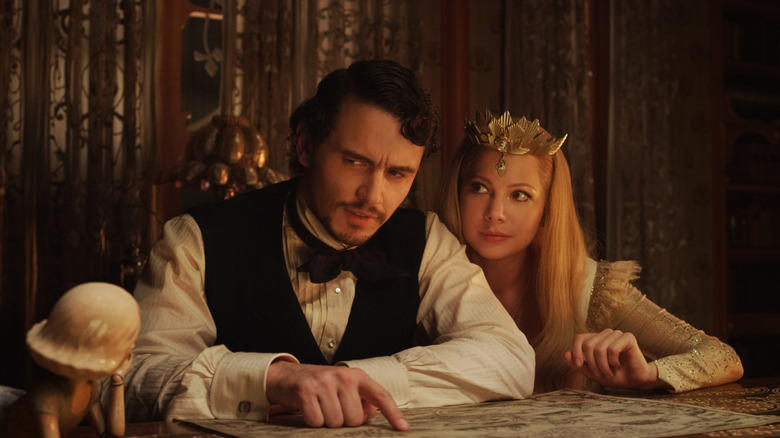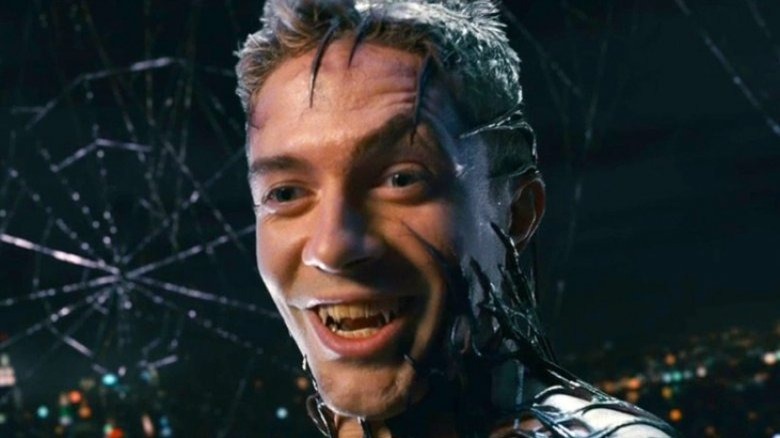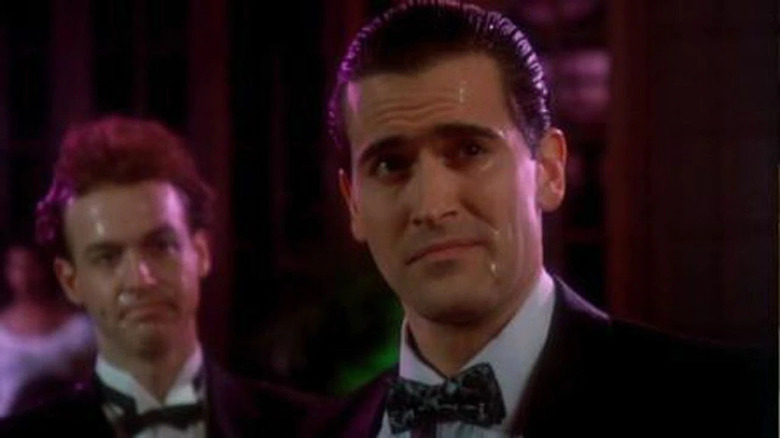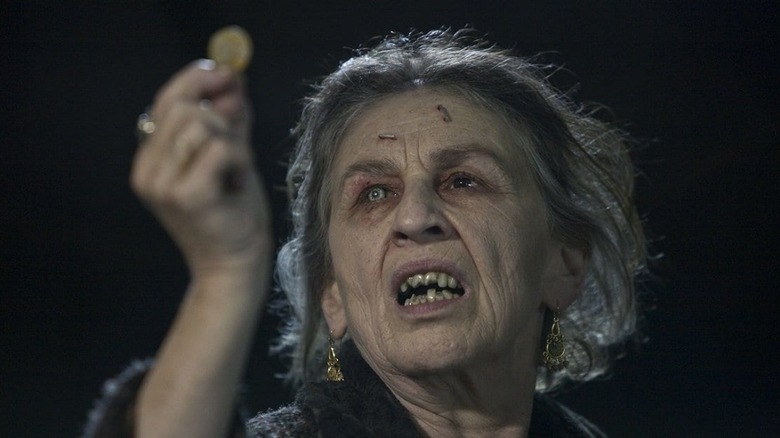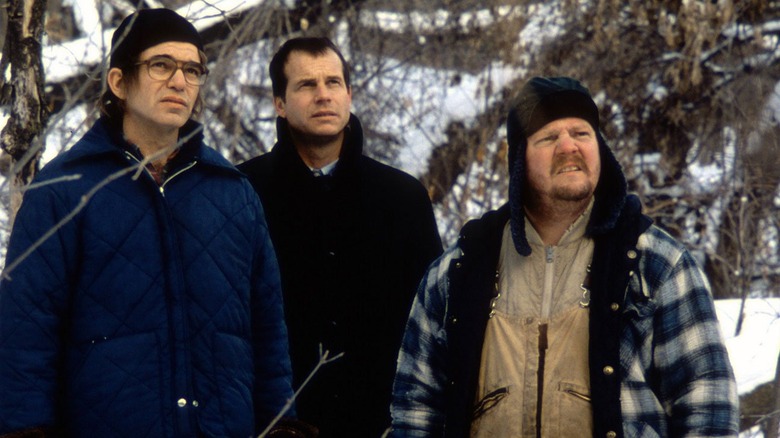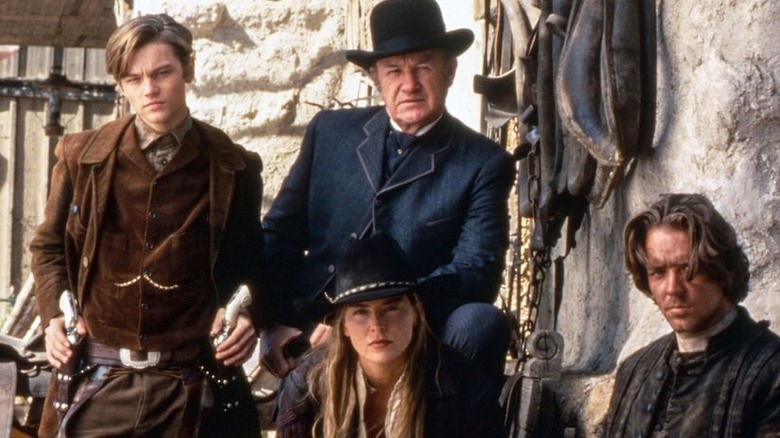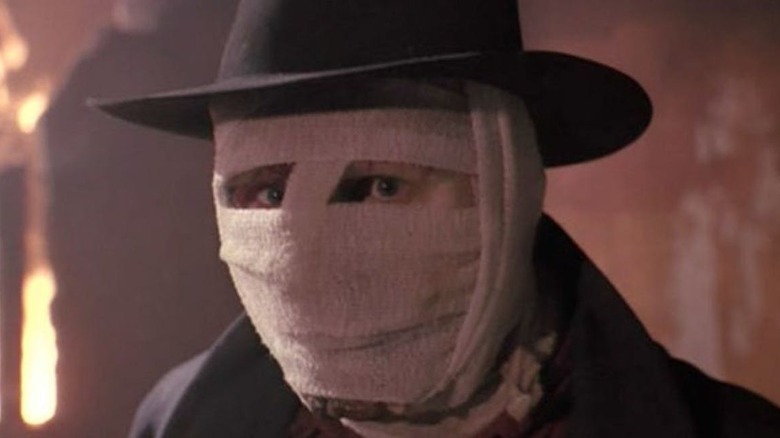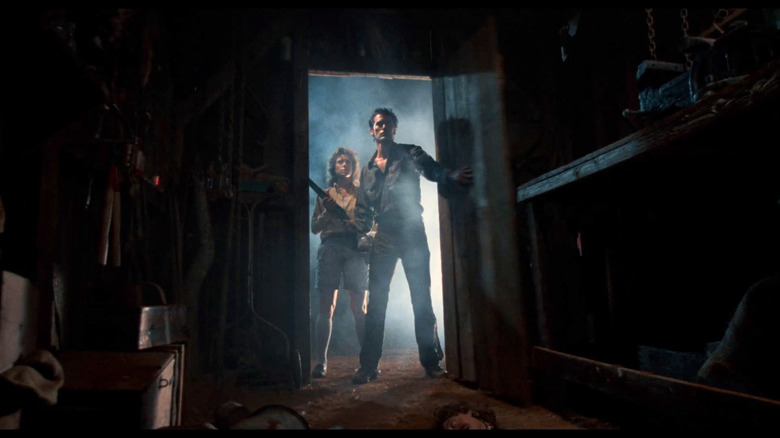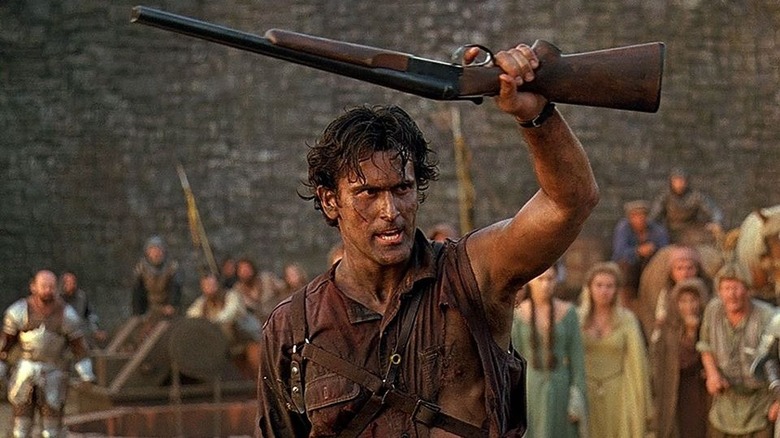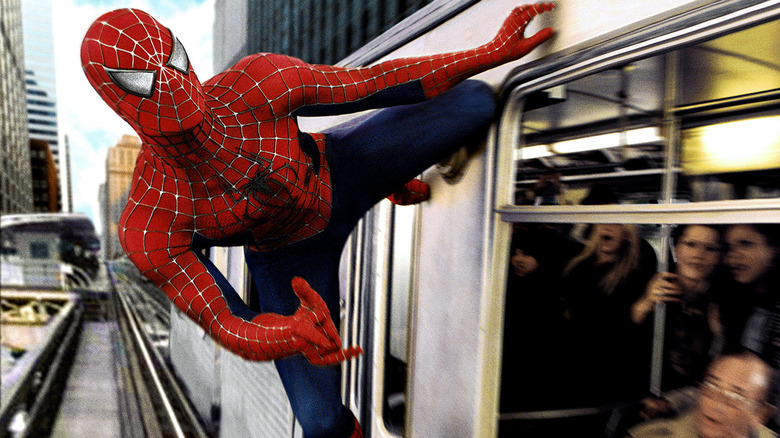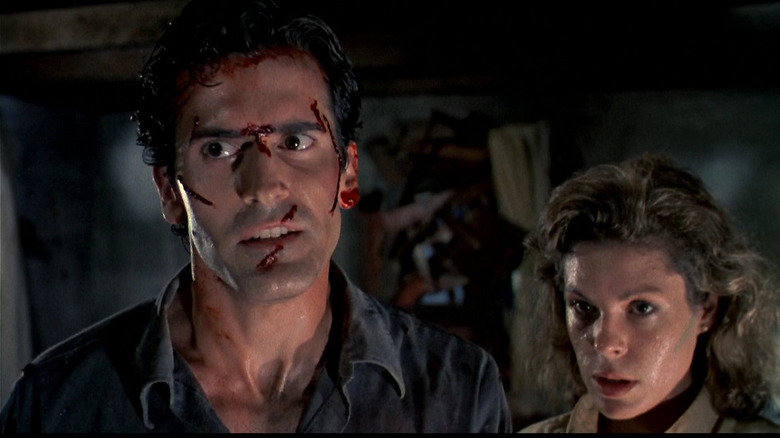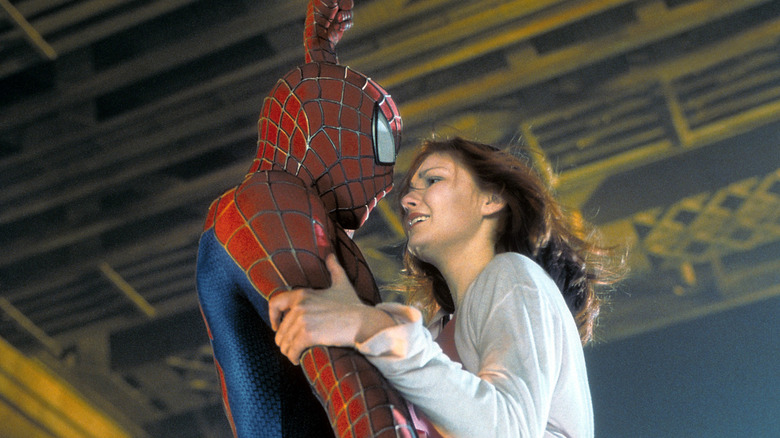Every Sam Raimi Film Ranked
Perhaps one of the most interesting established directors working in Hollywood today, Sam Raimi has always bridged the gap between niche genres and the mainstream, with one foot in studio filmmaking and the other in independent cinema. His career was jumpstarted with the "Evil Dead" franchise, a series of low-budget supernatural horror films that would go on to become cult classics with legions of devoted fans around the world.
But although he started in Hollywood with scary movies, Raimi has since proven capable of putting his signature touch on a variety of different genres. He seems to be especially drawn to the juxtaposition of terror and humor, and how they can bleed into one another as especially visceral emotions. Regardless of whether Raimi is working on a horror film or a mainstream superhero blockbuster, there's an element of camp in the vast majority of his projects, a refusal to take things entirely seriously that would come to define a Raimi picture.
But how do they stack up against one another?
15. For Love of the Game (1999)
There was a point in Kevin Costner's career where, God love him, he just couldn't stay away from baseball movies. "For Love of the Game" sees him star as Billy Chapel, an aging pitcher on the verge of being traded away to a different team who, while lost in his thoughts on the mound, realizes that he's tantalizingly close to pitching a perfect game. It's a soppy, inspirational sports film without much to distinguish itself from the dozens of other movies in the same subgenre.
But worst of all, it doesn't feel like a Sam Raimi film. This would be his first foray into big-budget filmmaking, and although he clearly wanted to challenge himself creatively, he loses too much of the quirky independent flavor that would define his career. "For Love of the Game" would fail to break even at the box office, earning just $46 million on an $80 million budget.
14. The Gift (2000)
With "The Gift," Sam Raimi would conclude his run of misunderstood 1990s films. They occupy an amorphous epoch between his very successful horror period during the 1980s and early 1990s, and the career rebirth that Raimi's foray into mainstream superhero cinema would provide. But we're not quite there yet. "The Gift" stars Cate Blanchett as a small-town Southern clairvoyant who begins to experience disturbingly violent visions of things to come. When she becomes involved in a missing person investigation, her supernatural abilities will take her down a dangerous path.
Raimi was no stranger to stories featuring the strange and paranormal, but his take on a Southern gothic is too bland to make much of an impact. The performances are all perfectly serviceable, which should come as no surprise given Blanchett's involvement in the film. But the story, written by Billy Bob Thornton and Tom Epperson, isn't particularly inspired. "The Gift" is a brave attempt at an original Southern Gothic thriller, but there's very little in it that actually thrills.
13. It's Murder! (1977)
For Sam Raimi's directorial debut, we have to go all the way back to 1977, when he was still in college. Although Raimi was known for directing low budget, independent films in his early career, "It's Murder!" is in a totally different league: after scraping together a measly $2000 for the production, Raimi and his friends shot their 70-minute feature on Super 8. It was co-written by Raimi and Scott Spiegel, who would later work together on "Evil Dead II," and Raimi himself would star as a young man who inherits the family fortune after his uncle is murdered under mysterious circumstances.
"It's Murder!" on its own is much less remembered for its creative genius than it is as a representation of the promise of the director's early career. Even here, we can see the collaborations that would stick with him for decades, including one with a young actor by the name of Bruce Campbell, who would rocket to horror stardom a few years later in "The Evil Dead."
12. Oz the Great and Powerful (2013)
The land of Oz as originally envisioned by novelist L. Frank Baum is lush and dynamic, a fully-realized world with potential far beyond what we see in "The Wizard of Oz." So it makes perfect sense that there would be endless remakes and reimaginings and spinoffs of the source material over the decades, culminating in Sam Raimi's "Oz the Great and Powerful." Released in 2013 and starring James Franco, it would serve as a prequel to the 1939 version of "The Wizard of Oz," exploring the origins of the titular wizard.
Franco plays Oscar Diggs, a small-time con artist from Kansas who is swept up in a tornado and transported to Oz, where he maintains a personal mythology that would see him operate at the center of society in Emerald City. "Oz the Great and Powerful" is a vibrant, ambitious project, and it's clear that there are points where it gets away from Raimi. It would nevertheless become one of his most financially successful films, bringing in nearly half a billion dollars at the box office.
11. Spider-Man 3 (2007)
After two "Spider-Man" films in a row that were charming, engaging, and financially successful, it's safe to say that expectations were high going into "Spider-Man 3." But unfortunately, it would make a lot of mistakes right out of the gate, mistakes that are a little hard to forgive. It falls into a trap that Spider-Man films seem particularly susceptible to — having too many villains.
Here, we have not just Sandman, or Venom, or the second incarnation of the Green Goblin, but all three at the same time. Thomas Haden Church makes sense as Sandman, and the ground had been laid for James Franco's Harry Osborn to pick up the mantle from his father since the first film. But Topher Grace is woefully miscast as Venom, and the role does him no favors.
But what's worse is the evolution of Peter Parker in "Spider-Man 3." Already aging out of the role, Tobey Maguire is forced into cringeworthy territory as Venom begins to infect him, forcing him to leer at girls on the streets and do a weird jazz strut all over New York City. There will likely come a time when "Spider-Man 3" faces a critical reevaluation and people try to argue that it's not that bad, but it just can't hold a candle to the two films that came before it.
10. Crimewave (1985)
The divergent paths of Sam Raimi and the Coen Brothers are fascinating enough that someone really should write a book about them. The three filmmakers would get their start in the early 1980s, after writing and directing unexpected hits with "The Evil Dead" and "Blood Simple," respectively. Both Raimi and the Coen Brothers would find success again later in the 1980s; Raimi with "Evil Dead II," and the Coen Brothers with "Raising Arizona." But before then, there would be one brief, bizarre moment in the mid-1980s where they collaborated with one another on the mother of all bombs. This is "Crimewave."
On paper, it looks like a hit. Raimi's directing, the Coen Brothers have written the screenplay, and they've assembled a cast that includes Bruce Campbell and Frances McDormand. What's not to like about that? "Crimewave" is an homage to the sort of films that they grew up on, a hodgepodge of film noir and B-movie horror-comedy antics. But for whatever reason, it just didn't connect with viewers: It ultimately may have been too tonally jarring for mainstream audiences.
9. Drag Me to Hell (2009)
Raimi famously got his start in horror, and "Drag Me to Hell" represents a return to the genre that had made his career. It's a proper horror film, not just horror-adjacent like some of his other projects have been, and there's a sense that Raimi really enjoyed himself during the process. He would not only direct, but co-write alongside his brother Ivan in what would be their fourth professional collaboration (after "Darkman," "Army of Darkness," and "Spider-Man 3").
A morality tale at heart, "Drag Me to Hell" stars Alison Lohman as Christine, a bank loan officer who refuses to help an elderly woman by extending her mortgage, essentially evicting her. Furious at what she perceives to be cruel treatment, the old woman puts a curse on Christine: A powerful demon will haunt her for three days, after which it will drag her to hell. (Hence the name.) It feels like a good, old-fashioned horror romp, proving that although Raimi had moved on to different genres, he hadn't lost his touch.
8. A Simple Plan (1998)
With "A Simple Plan," Sam Raimi steps into territory previously dominated by his "Crimewave" collaborators, the Coen Brothers: the crime-ridden neo-noir set in icy Minnesota. But, as Glenn Lovell writing for Variety notes, Raimi would bring his signature horror sensibility to the proceedings, stating, "Fargo is deadpan noir; A Simple Plan ... is a more robust Midwestern Gothic that owes as much to [Edgar Allen] Poe as [Raymond] Chandler."
"A Simple Plan" stars Bill Paxton and Billy Bob Thornton as a pair of brothers who, along with a friend played by Brent Briscoe, stumble upon a crashed plane containing an astonishing $4.4 million in cash. What originally seems like a windfall ends up becoming a curse, as they slowly begin to suspect each other of planning to double cross one another. "A Simple Plan" is an understated, somber film, but one that would nonetheless earn two Academy Award nominations, for best supporting actor and best adapted screenplay.
7. The Quick and the Dead (1995)
Sam Raimi's films, aside from the huge tentpole blockbusters of the early 2000s, have always attracted a niche audience. But if there's a single one of his movies that is fundamentally misunderstood and underrated, it's "The Quick and the Dead." It's a western about a female gunslinger who rides into town seeking revenge for her father's murder, to which end she enters a dangerous dueling competition.
And although it wasn't particularly well-received in 1995, there's an argument to be made that it failed less because of its inherent qualities and more because it came out at a time when westerns were a dying breed, featuring a puzzling cast. Looking back, it's a fascinating lineup: Gene Hackman, Sharon Stone, a pre-"Titanic" Leonardo DiCaprio, and Russell Crowe in one of his very first Hollywood films. But it's easy to see why audiences may not have known what to make of it.
6. Darkman (1990)
As far as Sam Raimi's cred as a director of superhero popcorn flicks goes, most people would associate him primarily with the "Spider-Man" films of the early 2000s. But your friendly neighborhood Spider-Man was not his first foray into the realm of comic book fare. Back in 1990, he created an original superhero by the name of Darkman, a scientist (Liam Neeson) who develops superpowers after treatment for the acid burns that have disfigured his face and body.
Raimi would make "Darkman" with Universal, his first major studio production, which is fitting given the story's resemblance to the Universal monster movies of the 1930s. At its core, the film is one man's struggle to maintain his humanity, eventually becoming entirely detached and full of hatred for the person that he has turned into. "Darkman" would ultimately inspire two direct-to-video sequels ("Darkman II: The Return of Durant" in 1995 and "Darkman III: Die Darkman Die" in 1996), although neither Raimi nor star Liam Neeson would return to the franchise.
5. Evil Dead II (1981)
What's fun about "Evil Dead II" is that while the original film stays firmly in the realm of horror, Raimi lets his hair down a little with the sequel, still delivering on scares but at the same time embracing the inherent humor of the situation. Although "Evil Dead II" would cement Raimi's legacy as a filmmaker, it was only after the critical and commercial failure of "Crimewave" that he began to work in earnest on the sequel to his most popular film.
The story followed very closely in the footsteps of the original: Bruce Campbell's now iconic character Ash turns up at the same cabin in the woods for a romantic getaway with his girlfriend, only to find themselves besieged by demonic forces after a recorded incantation from the Book of the Dead is played out loud. "Evil Dead II" was only a modest commercial success, largely thanks to its limited release (a result of the fact that, had it been rated by the MPAA, it almost certainly would have received an X rating). It nonetheless found its audience, becoming one of the most significant cult films of the 1980s.
4. Army of Darkness (1992)
In today's landscape, where franchises are laboriously mapped out years in advance, it's refreshing to look at a trilogy that genuinely had no idea where it was going to end up. By the time Sam Raimi got to the final film in the "Evil Dead" series, he had lost the thread in the most delightful possible way. Far from the cabin in the woods that dominated the first two films, "Army of Darkness" showcases Ash (Bruce Campbell) having been transported to the Middle Ages, where he must continue his fight against the undead.
Interestingly, when Raimi was initially discussing the idea of a sequel to "The Evil Dead," his pitch was similar in many ways to what would become "Army of Darkness." However, the plan was shelved, as studios were concerned that the historical setting would require a much bigger budget. It wasn't until years later, after the success of "Darkman," that they reconsidered the idea, creating the horror-comedy that many "Evil Dead" fans love despite how unapologetically goofy it is.
3. Spider-Man 2 (2004)
The second entry in Raimi's "Spider-Man" trilogy, "Spider-Man 2" raises the stakes, giving the franchise perhaps its most emotionally compelling supervillain in the aptly named Doc Ock (played by a delightful Alfred Molina). A scientist whose lab experiment goes terribly wrong (par for the course in a comic book movie), he winds up with metal tentacles fused to his body. They do his bidding, but they also begin to develop a mind of their own, especially when Doc Ock loses his temper. He blames Spider-Man for his predicament, in a truly impressive feat of mental gymnastics. As though Peter Parker didn't have enough on his mind already.
This is the classic bridge of a trilogy, where the hero begins to doubt their purpose, only to be brought back into the fold at the last minute. When Peter makes the decision to wear the Spider-Man costume, he takes on the responsibility of defending the city, as we see in one of the great superhero set pieces with Spider-Man fighting Doc Ock on a New York City el train. The complexity of Doc Ock and his dynamic with Peter represents some of the best character work in any of the modern superhero films.
2. The Evil Dead (1981)
There's pretty much one reason we're talking about Sam Raimi's directorial career, and that's "The Evil Dead." The horror classic was the film that first put him on the map, and launched a franchise that has attracted die-hard followers for the past 40 years. One of the original "cabin in the woods" horror films, "The Evil Dead" features a group of young, reckless college students who foolishly summon demonic forces through the use of a supernatural Book of the Dead.
What follows is a gruesome battle against the forces of darkness, with Bruce Campbell leading the production and establishing himself as a horror legend. Although there are comic elements that Raimi would become known for, "The Evil Dead" is a relentlessly brutal exercise in camp gore. The violent chaos held within the film is vibrant and endlessly inventive, with Raimi utilizing practical effects in a way that would captivate audiences.
1. Spider-Man (2002)
Right now, in the midst of supreme Marvel domination, it's hard to even remember that there was a time when superhero films weren't ubiquitous. Sam Raimi's "Spider-Man" would change the game, introducing the character as not just fodder for comic book aficionados to geek out over, but one that had mainstream appeal and the box office numbers to prove it.
Tobey Maguire stars as the unassuming Peter Parker, who is transformed after a bite from a radioactive spider — an event that grants him spider-like powers, which include climbing up walls, shooting webs from his wrists, and incredibly quick reflexes. All of these will be put to the test when he squares off against the Green Goblin, an extremely camp but nonetheless dangerous supervillain wreaking havoc across New York City.
Raimi's interpretation of "Spider-Man" is bright and vibrant, with set pieces that still feel grounded in a physical reality before CGI would take over entirely. "Spider-Man" may have been rebooted a handful of times since then, but the succeeding films have yet to match the energy and sheer charm of Raimi's version.
